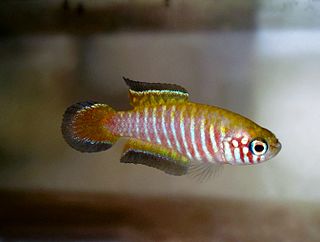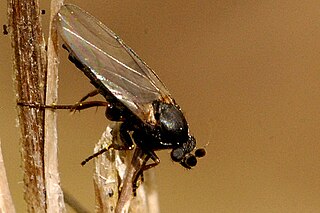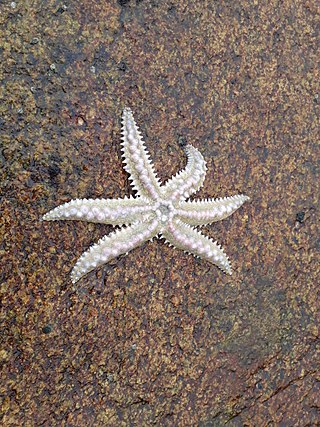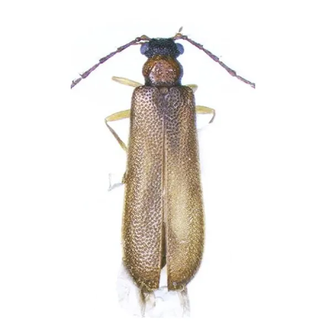The Nymphomyiidae are a family of tiny (2 mm) slender, delicate flies (Diptera). Larvae are found among aquatic mosses in small, rapid streams in northern regions of the world, including northeastern North America, Japan, the Himalayas, and eastern Russia. Around a dozen extant species are known, with two fossil species found in amber, extending back to the Mid Cretaceous. Under an alternative classification, they are considered the only living representatives of a separate, suborder called Archidiptera which includes several Triassic fossil members. The family has characteristics associated with the Nematocera as well as the Brachycera. The antennae are shortened as in the Brachycera and these flies are long, having a snout with vestigeal mouthparts, non-differentiated abdominal segments with large cerci. The wings are narrow and hair-fringed and have very weak venation. They are known to form cloud-like swarms in summer and the short-lived non-feeding adults have wings that fracture at the base shortly after mating.
Aphyonidae is a family of eel-like fishes in the order Ophidiiformes. They are found in tropical and subtropical waters throughout the world. They are deep-sea fishes, living between 2,000 metres (6,600 ft) and 6,000 metres (20,000 ft) depth.

The Lauxaniidae are a family of acalyptrate flies. They generally are small flies with large compound eyes that often are brightly coloured in life, sometimes with characteristic horizontal stripes, such as in Cestrotus species. Many species have variegated patterns on their wings, but in contrast they generally do not have variegated bodies, except for genera such as Cestrotus, whose camouflage mimics lichens or the texture of granitic rocks.
A blind fish is a fish without functional eyes. Most blind fish species are found in dark habitats such as the deep ocean, deep river channels and underground.
Malacoglanis gelatinosus is a species of catfish of the family Trichomycteridae, and the only species of the genus Malacoglanis. This fish grows to about 2.0 centimetres (.79 in) SL. and is native to the Caquetá River basin of Colombia. Stauroglanis is the sister group to a monophyletic group formed by Malacoglanis and Sarcoglanis.
The Sarcoglanidinae are a subfamily of catfishes of the family Trichomycteridae. It includes six genera: Ammoglanis, Malacoglanis, Microcambeva, Sarcoglanis, Stauroglanis, and Stenolicmus.

Platycheirus is a large genus of hoverflies. They are also called sedgesitters.

Aphyonus gelatinosus also known as the gelatinous blindfish is a species of blind cusk eel found in eastern Atlantic Ocean from Azores and Canary Islands; western Indian Ocean in Natal, South Africa and southwest Pacific Ocean known in Australia only from the type locality, off Cape York, Queensland. This species is the only known member of its genus.

Simpsonichthys is a genus of killifish from the family Rivulidae the species of which are endemic to temporary freshwater habitats like ponds in the upper Paraná, upper Araguaia, upper Jequitinhonha and São Francisco basins on the central Brazilian Plateau. They are small annual killifish that reach up to 5.5 cm (2.2 in) in standard length.
Cretomerobius is an extinct genus of lacewings in the neuropteran family Hemerobiidae known from fossils found in Asia. The genus currently contains a single species, the Aptian C. disjunctus.
Paraphyonus is a genus of blind cusk eels found in the Atlantic, Indian and Pacific Oceans. This genus was created for species formerly classified under Aphyonus when sampling of specimens showed that the type species of Aphyonus, A. gelatinosus, was not closely related to the other known species in the genus, including the newly identified species P. iselini and P. merretti. This work also brought Barathronus solomonensis into the new genus. The result of this classification is that Aphyonus would be a monotypic genus.

Cucullanus is a genus of parasitic nematodes. The genus includes more than 100 species.

Pandeleteius is a genus of broad-nosed weevils in the family Curculionidae. There are over 150 described species in Pandeleteius, distributed across the Americas. Most species in the genus were described by Anne Howden.

Anevrina is a genus of phorid flies circumscribed by the Italian naturalist Paolo Lioy in 1864.
Eothalassius is a genus of flies in the family Dolichopodidae. It contains four described species, from Southeast Asia, Papua New Guinea, Costa Rica and the Mediterranean. It also contains three undescribed species, one from New Caledonia and two from Japan.

Meyenaster is a genus of starfish in the family Asteriidae. It is a monotypic genus and the only species is Meyenaster gelatinosus which was first described by the Prussian botanist and zoologist Franz Julius Ferdinand Meyen in 1834. It is found in the southeastern Pacific Ocean on the coasts of South America.

Bythitinae is a subfamily of viviparous brotulas, one of the two subfamilies in the family Bythitidae. This subfamily is characterised by having the dorsal, caudal and anal fins combined. They are mostly found in temperate to tropical seas, from reefs to the benthopelagic zone, but some species from the North Atlantic Ocean occur in into Arctic waters.
The paleofauna of the Eocene Okanagan Highlands consists of Early Eocene arthropods, vertebrates, plus rare nematodes and molluscs found in geological formations of the northwestern North American Eocene Okanagan Highlands. The highlands lake bed series' as a whole are considered one of the great Canadian Lagerstätten. The paleofauna represents that of a late Ypresian upland temperate ecosystem immediately after the Paleocene-Eocene thermal maximum, and before the increased cooling of the middle and late Eocene to Oligocene. The fossiliferous deposits of the region were noted as early as 1873, with small amounts of systematic work happening in the 1880-90s on British Columbian sites, and 1920-30s for Washington sites. Focus and more detailed descriptive work on the Okanagan Highlands site started in the last 1970's. Most of the highlands sites are preserved as compression-impression fossils in "shales", but also includes a rare permineralized biota and an amber biota.

Binburrum articuno is a species of beetle which in the taxonomy field is classified under the genus Binburrum. It exists only in Australia. It is named after the fictional creature known as Articuno from the pop culture franchise Pokémon. It was named alongside other beetles from the same genus, Binburrum zapdos and Binburrum moltres, by Darren Pollock and Yun Hsiao. Because their names are based on a very popular franchise, these species saw above average media coverage upon being named.










